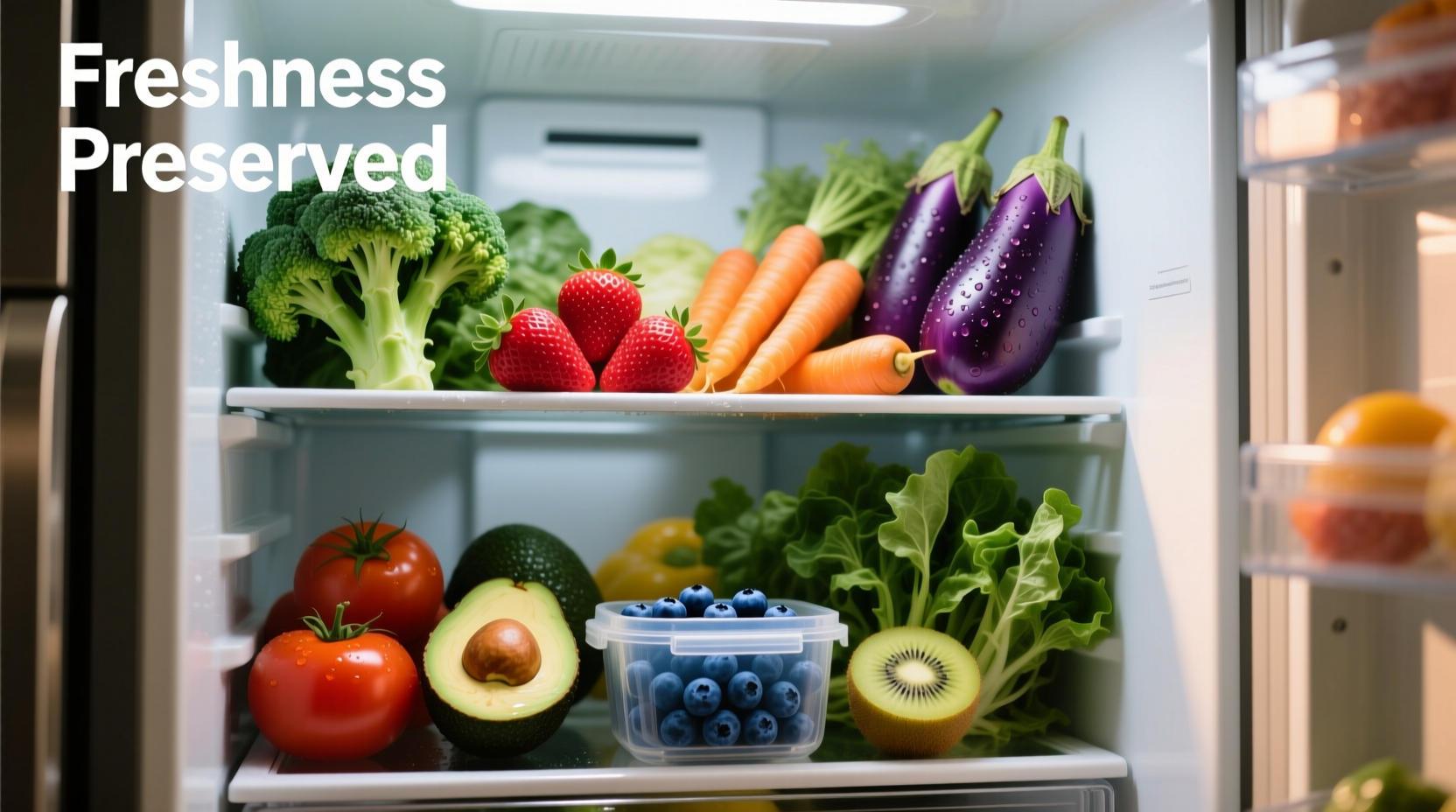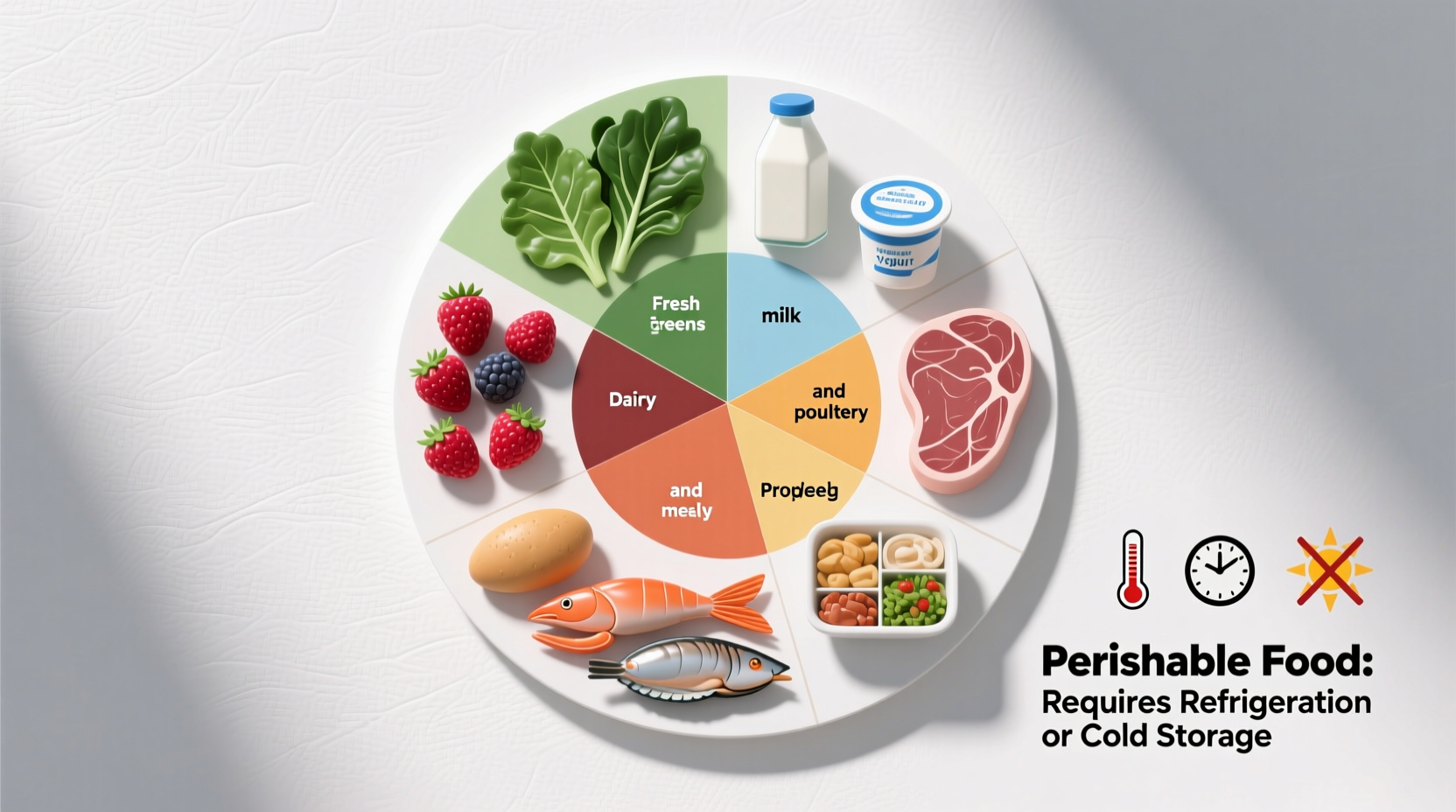Perishable food refers to any food item that requires refrigeration or freezing to remain safe for consumption, typically spoiling within days or weeks when stored at room temperature. These foods include dairy products, meats, poultry, seafood, eggs, cut fruits and vegetables, and cooked dishes that can quickly become breeding grounds for harmful bacteria when not properly stored.
Understanding perishable foods isn't just about avoiding spoiled meals—it's essential for preventing foodborne illnesses that affect 1 in 6 Americans annually. When handled correctly, perishable foods provide vital nutrition, but improper storage transforms them into potential health hazards within hours.
The Science Behind Food Perishability
Perishable foods contain the perfect conditions for microbial growth: moisture, nutrients, and neutral pH levels. When these foods enter the "danger zone" between 40°F and 140°F (4°C to 60°C), bacteria like Salmonella, E. coli, and Listeria can double in number every 20 minutes. The FDA Food Code identifies perishable foods as those requiring time and temperature control for safety (TCS foods), making proper handling non-negotiable for food safety.

Perishable vs. Non-Perishable: Clear Distinctions
| Perishable Foods | Non-Perishable Foods | Conditionally Perishable |
|---|---|---|
| Fresh meat, poultry, seafood | Dry pasta, rice, grains | Canned goods (once opened) |
| Dairy products (milk, cheese, yogurt) | Canned goods (unopened) | Nut butters (after opening) |
| Eggs | Dried beans, lentils | Jam and jelly (after opening) |
| Cut fruits and vegetables | Honey, pure maple syrup | Opened vinegar-based products |
| Cooked leftovers | Dark chocolate (70%+ cocoa) | Opened coconut milk |
This comparison follows USDA Food Safety and Inspection Service guidelines, which classify foods based on their required temperature controls. Conditionally perishable items become safety risks only after packaging is compromised, requiring consumers to understand post-opening storage requirements.
Temperature Danger Zone: Your Critical Safety Window
The critical temperature range between 40°F and 140°F represents the danger zone where bacteria multiply rapidly. According to CDC food safety data, perishable foods should never remain in this zone for more than two hours (or one hour when ambient temperatures exceed 90°F). Refrigerators must maintain temperatures at or below 40°F, while freezers should operate at 0°F or lower to effectively slow microbial growth.
Perishable Food Timeline: How Quickly Spoilage Occurs
Understanding the shelf life of common perishable foods helps prevent both food waste and illness. This timeline reflects USDA-recommended storage durations under proper conditions:
- Fresh poultry: 1-2 days refrigerated, 9-12 months frozen
- Ground meats: 1-2 days refrigerated, 3-4 months frozen
- Beef steaks/roasts: 3-5 days refrigerated, 6-12 months frozen
- Fish: 1-2 days refrigerated, 6-8 months frozen
- Milk: 5-7 days refrigerated after opening
- Eggs: 3-5 weeks refrigerated in original carton
- Cut fruits/vegetables: 2-4 days refrigerated
- Cooked leftovers: 3-4 days refrigerated
These timeframes assume proper refrigeration at 40°F or below. Temperature fluctuations significantly shorten these windows, making consistent cold chain maintenance essential from store to table.
Practical Storage Strategies for Maximum Safety
Effective perishable food management requires understanding your refrigerator's temperature gradients. The FDA recommends these strategic placements:
- Bottom shelf: Raw meats (to prevent cross-contamination from drips)
- Middle shelves: Dairy products and eggs
- Top shelf: Ready-to-eat foods and leftovers
- Door compartments: Beverages and condiments (least cold area)
- Crisper drawers: Produce with humidity controls adjusted appropriately
Use a refrigerator thermometer to verify actual temperatures, as built-in displays often prove inaccurate. The CDC reports that nearly 40% of home refrigerators operate above the safe 40°F threshold, unknowingly putting families at risk.
Recognizing Spoilage: Beyond the "Sniff Test"
Relying solely on smell to determine food safety is dangerously unreliable. Harmful bacteria like Listeria often produce no noticeable odor while multiplying to dangerous levels. Instead, watch for these definitive spoilage indicators:
- Texture changes: Sliminess on meats or vegetables, curdling in dairy
- Visual cues: Mold growth (even if localized), color changes beyond normal ripening
- Package abnormalities: Bulging containers, excessive liquid
- Time expiration: Adherence to recommended storage durations
When in doubt, throw it out. The USDA estimates that proper food handling could prevent up to 23 million cases of foodborne illness annually in the United States alone.
Special Considerations for Vulnerable Populations
Certain groups face heightened risks from improperly handled perishable foods. Pregnant women, older adults, young children, and immunocompromised individuals should exercise additional precautions:
- Avoid refrigerated pâtés or meat spreads
- Reheat deli meats to steaming hot before consumption
- Consume opened canned goods within 2 days rather than 4-5
- Use separate cutting boards for raw meats and produce
- Wash hands thoroughly for 20 seconds before and after food handling
These recommendations follow FDA guidelines for at-risk populations, recognizing that their immune systems may not effectively combat pathogens that healthy adults could tolerate.
Food Safety During Power Outages
When the power fails, your refrigerator becomes a temporary time capsule for perishable foods. Follow these evidence-based guidelines from the USDA:
- Keep refrigerator and freezer doors closed (refrigerated food stays cold for ~4 hours)
- Freezer food remains safe for 24-48 hours when full (less if partially filled)
- Use coolers with ice packs for critical items if outage exceeds 2 hours
- Discard perishable foods that have been above 40°F for more than 2 hours
- When uncertain about safety, follow the rule: "When in doubt, throw it out"
During extended outages, prioritize consuming perishable items in this order: leftovers, dairy, then raw meats. The FDA provides specific guidance for each food category during emergency situations.











 浙公网安备
33010002000092号
浙公网安备
33010002000092号 浙B2-20120091-4
浙B2-20120091-4